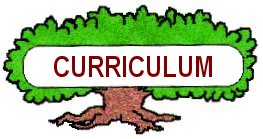

Home Page |
MICHIGAN FORESTS FOREVER TEACHERS GUIDE
| A FOREST MANAGEMENT PLAN OUTLINE |  |
The following outline was modified from an example developed by Michigan Conservation Districts. Each element in the outline does not necessarily need to be addressed, as some items may not be relevant in a particular forest situation. This outline can serve as a tool to consider as many natural facets as possible.
1. Who is the forest owner? Landowner’s name, address, and other contact information
2. Where is the property?
Legal description and directions on how to get to the property.
Where
does the property into the landscape picture? Watersheds?
Neighboring ownerships?
Plat books can be very helpful. Some counties have them availabe on-line.
3. What are the forest objectives? Here is where you list what is envisioned for the future and what the landowner wants out of the property.
4. What do they have? This is where the description of the natural resources fits in, such as the timber inventory, signs of wildlife, endangered resources, roads, soils, etc.
Current land cover - percent
forest, open wetland, old field, etc.
Plant and animal species present or potentially present (wildlife habitat
associations)
Soil maps and descriptions, productivity, erosion potential, etc. NRCS Web Soil Survey is great!
Property history/Regional History - glacial/geologic features, pre-settlement
conditions, agricultural/logging history, etc.
Watershed of occurrence and conditions of that watershed (try
www.eco2eco.net for large-scale maps)
Wildlife habitat conditions (general or specific to objectives)
General timber stand conditions (average age, basal area, volumes, species,
etc.)
Surface water conditions (streams, ponds, etc.)
Copy of air photo (from soil survey, on-line satellite imagery,
other sources)
Pre-printed maps (from the plat book, Internet, other sources)
Unique features of property (e.g. endangered species, seeps, vernal pools, old
growth, grasslands, dunes, etc…)
The Michigan Natural Features Inventory (MNFI) can help.
5. What management options are there?
Silvicultural options and/or
habitat treatments (MSAF Guidelines)
Tree/shrub/forb/grass plantings
Economics vs. habitat consideration
BMPs and other conservation
practices, Michigan BMPs
Health and potential productivity
Timber harvest management
systems
Land use changes
Native Species (e.g. MNFI)
6. Who might serve as information resources for this property?
Michigan Conservation Districts
Michigan Tree Farm Program
Natural Resource Conservation Service (NRCS)
U.S. Fish & Wildlife Service (USFWS)
MSU Extension (MSUE)
Forestry/wildlife consultants (e.g. DNR Forest Stewardship Program)
Forest industry foresters/loggers
Tree and conservation nurseries
Engineers
Others?
7. What might you be able to do by yourself? What about information and education handouts and flyers?
 |
This website was developed and created by Michigan State University Extension for the teachers of the State of Michigan. |
Page Name:
Curriculum/SupportDocs/OutlinePlan.htm